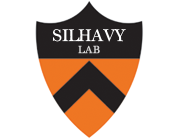Accumulation of the enterobacterial common antigen lipid II biosynthetic intermediate stimulates degP transcription in Escherichia coli
Type
In Escherichia coli, transcription of the degP locus, which encodes a heat-shock-inducible periplasmic protease, is controlled by two parallel signal transduction systems that each monitor extracytoplasmic protein physiology. For example, the heat-shock-inducible sigma factor, sigmaE, controls degP transcription in response to the overproduction and folded state of various extracytoplasmic proteins. Similarly, the CpxA/R two-component signal transduction system increases degP transcription in response to the overproduction of a variety of extracytoplasmic proteins. Since degP transcription is attuned to the physiology of extracytoplasmic proteins, we were interested in identifying negative transcriptional regulators of degP. To this end, we screened for null mutations that increased transcription from a strain containing a degP-lacZ reporter fusion. Through this approach, we identified null mutations in the wecE, rmlAECA, and wecF loci that increase degP transcription. Interestingly, each of these loci is responsible for synthesis of the enterobacterial common antigen (ECA), a glycolipid situated on the outer leaflet of the outer membrane of members of the family Enterobacteriaceae. However, these null mutations do not stimulate degP transcription by eliminating ECA biosynthesis. Rather, the wecE, rmlAECA, and wecF null mutations each impede the same step in ECA biosynthesis, and it is the accumulation of the ECA biosynthetic intermediate, lipid II, that causes the observed perturbations. For example, the lipid II-accumulating mutant strains each (i) confer upon E. coli a sensitivity to bile salts, (ii) confer a sensitivity to the synthesis of the outer membrane protein LamB, and (iii) stimulate both the Cpx pathway and sigmaE activity. These phenotypes suggest that the accumulation of lipid II perturbs the structure of the bacterial outer membrane. Furthermore, these results underscore the notion that although the Cpx and sigmaE systems function in parallel to regulate degP transcription, they can be simultaneously activated by the same perturbation.

